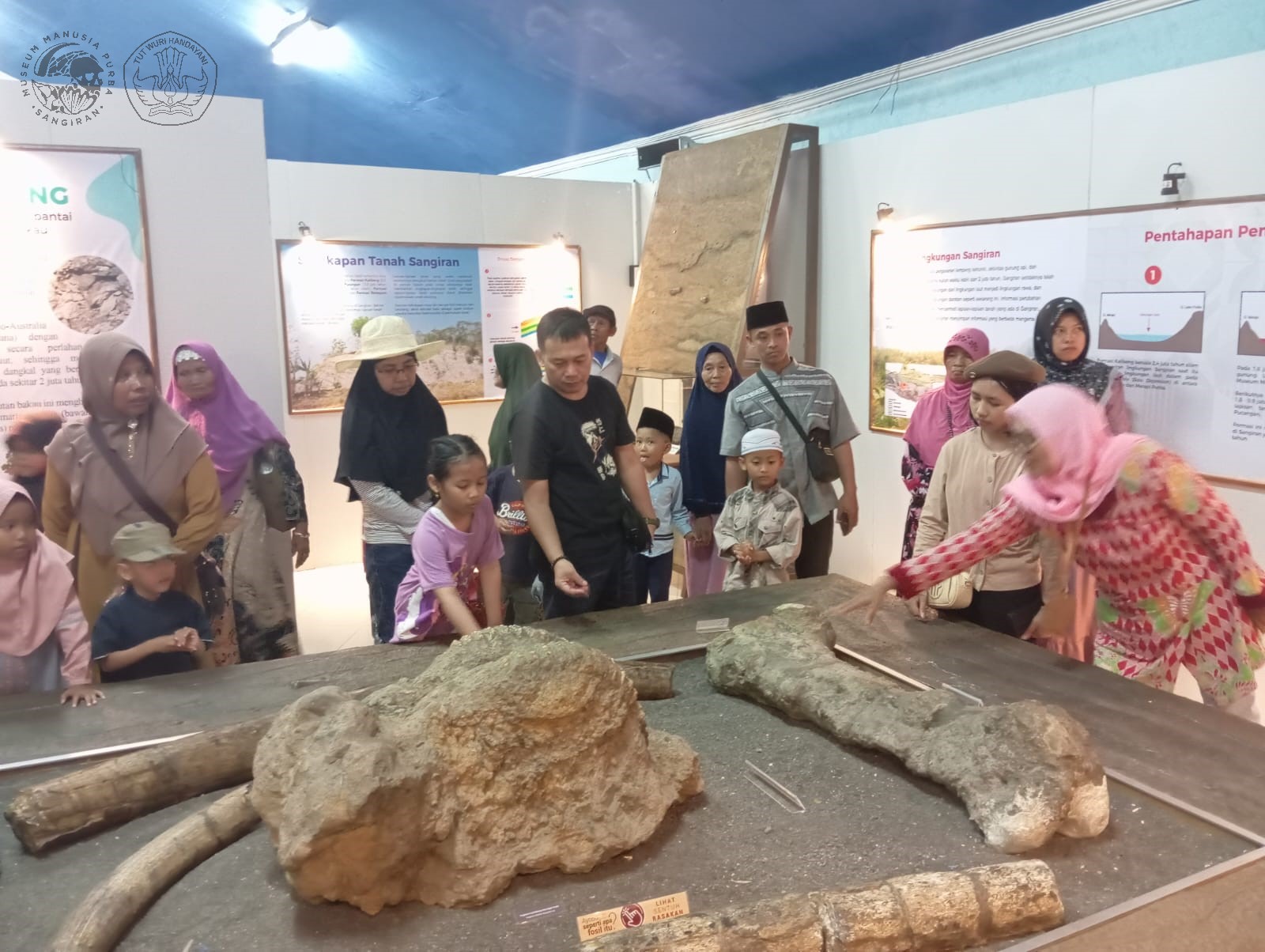Sangiran’s stratigraphy gives a study of an evolutional process of the Paleo environment that has been lasting continuously for at least 2 million years.
In the lower part, there is a blue clay layer of Kalibeng Formation which dated 2.4 million years and shows that Sangiran wasadeep marine in the end of Pliocene.
Then, in the beginning of Lower Pleistocene around 1.7 million years ago, the volcanic lahars of Lawu Volcano were deposited under the black clay of Pucangan Formation. This layer changed Sangiran’s environment from marine into swamp area.
An erosion occurred in the South Mountains around 0.9 million year ago. The pisoid lime stones and volcanic gravels which were brought by the erosion flocked in Sangiran area and formed a 1-4 meter layerthatwas called as grenzbank. Recently, Sangiran has become a continental area.
For the next phase, there was a great eruption around Sangiran that brought million cubes of volcanic sediment through the rivers that covered toe grenzbank. This 40 meter volcanic sediment is known as Kabuh Formation and dated back around 700,000-250,000 years ago.
The next is Notopuro Formation that covers Kabuh Formation by various andesit materials in sizes from gravels up to boulders. The sedimentation occurred instantly in about 70,000 years.
Sumber: Leaflet Sangiran The Home Land of Java Man





